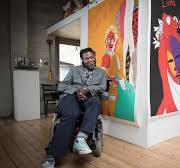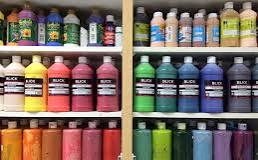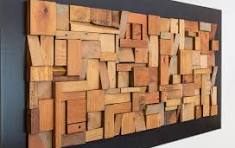The Captivating World of Artists
Artists are the creators of beauty, the storytellers of emotions, and the visionaries of our world. Through their unique perspectives and creative talents, artists have the power to inspire, provoke thought, and evoke deep feelings within us.
Expressing Emotions Through Art
Artists use various mediums such as painting, sculpture, photography, and performance art to express their innermost thoughts and emotions. Each brushstroke, each note played, and each movement performed is a reflection of the artist’s soul, inviting us to delve into their world and experience their reality.
Capturing Moments in Time
Artists have the remarkable ability to capture fleeting moments in time and immortalize them through their creations. Whether it’s a serene landscape painting that transports us to a tranquil setting or a powerful sculpture that conveys a profound message, artists have the gift of freezing moments for eternity.
Inspiring Change and Reflection
Through their art, artists have the power to inspire change, spark dialogue, and provoke introspection. Their works can challenge societal norms, raise awareness about pressing issues, and ignite passion within individuals to make a difference in the world. Artists serve as catalysts for transformation and growth.
A Diverse Community of Creativity
The world of artists is a diverse tapestry woven with different styles, techniques, and cultural influences. From classical masters to contemporary trailblazers, each artist brings a unique perspective that enriches our understanding of art and expands our horizons. The artistic community thrives on collaboration, innovation, and mutual support.
As we immerse ourselves in the captivating world of artists, we embark on a journey of discovery, enlightenment, and inspiration. Let us celebrate the creativity and passion that artists bring to our lives and embrace the transformative power of art.
9 Essential Tips for Artists to Enhance Creativity and Skill Development
- Practice regularly to improve your skills.
- Study the work of other artists for inspiration.
- Experiment with different mediums and techniques.
- Attend art classes or workshops to learn new skills.
- Seek feedback from peers and mentors to grow as an artist.
- Develop your own unique style and voice in your artwork.
- Don’t be afraid to make mistakes; they are part of the learning process.
- Stay organized with your art supplies and workspace.
- Take breaks when needed to prevent burnout.
Practice regularly to improve your skills.
Consistent practice is essential for artists to enhance their skills and refine their craft. By dedicating time regularly to create, experiment, and explore new techniques, artists can push their boundaries, unlock their creativity, and grow as professionals. Through persistent practice, artists not only improve their technical abilities but also develop their unique style and artistic voice. Embracing a routine of regular practice allows artists to evolve continuously, challenge themselves creatively, and strive for excellence in their work.
Study the work of other artists for inspiration.
To enhance your artistic vision and spark creativity, it is valuable to study the work of other artists for inspiration. By immersing yourself in the diverse styles, techniques, and themes explored by different artists, you can expand your artistic repertoire and gain fresh perspectives. Analyzing the masterpieces of renowned artists or discovering emerging talents can ignite new ideas, challenge your own creative boundaries, and ultimately enrich your own artistic journey. Embracing the artistry of others not only broadens your artistic horizons but also fosters a deeper appreciation for the beauty and diversity of the creative world.
Experiment with different mediums and techniques.
To enhance their artistic expression and expand their creative horizons, artists should embrace experimentation with various mediums and techniques. By stepping outside their comfort zones and exploring new methods of creation, artists can discover fresh perspectives, unlock hidden talents, and push the boundaries of their artistic capabilities. Embracing experimentation fosters growth, innovation, and a deeper connection to the art-making process, ultimately leading to the development of a unique artistic voice that resonates with audiences on a profound level.
Attend art classes or workshops to learn new skills.
To enhance your artistic abilities and expand your creative horizons, consider attending art classes or workshops to learn new skills. Engaging in structured learning environments led by experienced instructors can provide valuable insights, techniques, and feedback to help you grow as an artist. By immersing yourself in these educational opportunities, you can discover fresh perspectives, refine your craft, and cultivate a deeper understanding of various artistic processes. Embrace the opportunity to learn from others, experiment with different mediums, and challenge yourself to push beyond your comfort zone. Attend art classes or workshops as a means of continuous growth and development on your artistic journey.
Seek feedback from peers and mentors to grow as an artist.
Seeking feedback from peers and mentors is a valuable practice for artists looking to grow and evolve in their craft. Constructive criticism and guidance from those who understand the nuances of art can provide fresh perspectives, highlight areas for improvement, and offer encouragement to push boundaries creatively. By actively engaging with feedback, artists can refine their skills, expand their artistic vision, and embark on a journey of continuous learning and self-improvement.
Develop your own unique style and voice in your artwork.
To truly stand out as an artist, it is essential to develop your own unique style and voice in your artwork. By exploring different techniques, experimenting with various mediums, and staying true to your artistic vision, you can carve out a distinct identity that sets you apart from others. Embrace your individuality, draw inspiration from your personal experiences and emotions, and let your creativity flow freely. Cultivating a signature style not only showcases your artistic prowess but also establishes a deeper connection between you and your audience, leaving a lasting impression that resonates long after the artwork is viewed.
Don’t be afraid to make mistakes; they are part of the learning process.
Embracing mistakes is an essential aspect of an artist’s journey towards growth and mastery. By acknowledging that errors are inherent in the creative process, artists can free themselves from fear and perfectionism, allowing room for experimentation and innovation. Mistakes serve as valuable lessons that provide insights, spark new ideas, and foster artistic development. Through trial and error, artists discover their unique voice, refine their skills, and ultimately create works that resonate with authenticity and depth.
Stay organized with your art supplies and workspace.
Maintaining organization with your art supplies and workspace is essential for maximizing creativity and productivity as an artist. By keeping your materials neatly arranged and your workspace clutter-free, you create a conducive environment for inspiration to flow freely. A well-organized space not only saves time searching for tools but also allows you to focus on your artistic process without distractions. Whether it’s arranging paints, brushes, or sketchbooks, a tidy workspace can enhance efficiency and elevate the quality of your work, enabling you to fully immerse yourself in the artistic journey.
Take breaks when needed to prevent burnout.
Taking breaks when needed is crucial for artists to prevent burnout and maintain their creative energy. Stepping away from their work allows artists to recharge, gain fresh perspectives, and rejuvenate their passion for creating art. By prioritizing self-care and recognizing the importance of rest, artists can sustain their artistic practice in the long run and continue producing meaningful and impactful work. Remember, breaks are not a sign of weakness but a necessary part of the creative process that fosters growth and inspiration.





